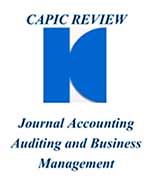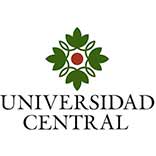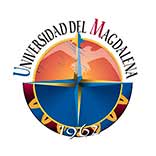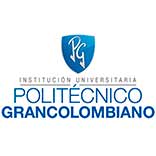Tax benefits in industrial companies that apply circular economy in Cartagena de Indias year 2022.
Published 2025-09-12
Keywords
- Tax benefits,
- circular economy,
- industrial sector
How to Cite
Copyright (c) 2025 Shirli Lucía Hernández Martínez, Luz Yineth Zúñiga Vega, Andrea Marcela Torres Payares, Rosa Isela Gutiérrez León

This work is licensed under a Creative Commons Attribution-NonCommercial-ShareAlike 4.0 International License.
Abstract
Since the introduction of the concept of sustainable development in the 1987 Brundtland report, governments have sought to provide incentives through policies that favor sustainability such as tax benefits for companies so that through their activity they contribute to the efficient use of resources and increase the business value, moving from the linear productive model to the circular economic model. The purpose is to analyze the incidence of tax benefits in companies in the industrial sector of the city of Cartagena de Indias with a circular economy approach in the year 2022. Therefore, the big companies that apply as an object of study, the tax benefits that they apply, are determined. have been issued and their impact on companies is evaluated. Methodologically, a mixed approach is used that combines qualitative and quantitative, descriptive methods to detail the tax benefits available, explaining the relationship between the implementation of circular economy practices and the tax benefits for companies. Through documentary and statistical analysis, the data is analyzed, taking into account a representative sample of industrial companies in Cartagena de Indias with a focus on the circular economy in the year 2022. Based on the results obtained, it is considered that, although tax incentives are available, industrial sector companies in the city do not implement strategies toward a circular economy due to implementation costs, risks, resistance to change, and the regulatory uncertainty associated with this transition.
Downloads
References
- Arnedo Lasheras, R. Jaca García, C. & Perfecto, C. L. (2020). Guía práctica para implementar la economía circular en las pymes. AENOR - Asociación Española de Normalización y Certificación. https://elibro-net.bibliotecavirtual.unisinu.edu.co/es/lc/unisinu/titulos/161633
- Bedoya, O. (2021), Ambientalmente, Obten Gestion de beneficios tributarios por las estrategias de economia circular. https://ambientalmente.com/obten-incentivos-tributarios-por-las-estrategias- de-economia-circular/
- Cárdenas, D. G. (2022). Estado del Arte de la Economía Circular, un estudio comparativo entre España, Chile y Colombia. Obtenido de Universidad Nacional Abierta y a Distancia - UNAD: https://repository.unad.edu.co/bitstream/handle/10596/50382/dgsalamancac.pdf?isAllowed=y&sequence=1
- Decreto 957 de 2019. (5 de junio de 2019). Normas Legales. Criterios de clasificacion de las micro,pequeñas,medianas y grandes empresas.
- Departamento Administrativo Nacional de Estadística . (2022). DANE.GOV.CO. Clasificación Industrial Internacional Uniforme de todas las actividades económicas Obtenido de https://www.dane.gov.co/files/sen/nomenclatura/ciiu/CIIU_Rev_4_AC2022.pdf
- Departamento Administrativo Nacional de Estadística . (2021). DANE.GOV.CO. Obtenido de https://www.dane.gov.co/index.php/estadisticas-por-tema/demografia-y-poblacion/proyecciones-de-poblacion
- Ellen MacArthur Foundation. (2015). Hacia una economía circular: Motivos económicos para una transición acelerada. Obtenido de https://emf.thirdlight.com/link/3o5auyrht09yuq1a2a/@/preview/1?o
- Forética. (2018). Cerrar el círculo. El business case de la economía circular. Forética. Obtenido de https://www.foretica.org/business_case_economia_circular_foretica.pdf
- Gobierno de la República de Colombia. (2019). Estrategia nacional de economía circular. Cierre de ciclos de materiales, innovación tecnológica, colaboración y nuevos modelos de negocio.
- Bogotá D.C., Colombia. Presidencia de la República; Ministerio de Ambiente y Desarrollo Sostenible; Ministerio de C. Obtenido de chrome extension://efaidnbmnnnibpcajpcglclefindmkaj/https://www.andi.com.co/Uploads/Estrategia%20Nacional%20de%20EconA%CC%83%C2%B3mia%20Circular-2019%20Final.pdf_637176135049017259.pdf
- Nizama Valladolid, N., & Nizama Chavez, L. M. (2020). El enfoque cualitativo de la investigacion Jurídica,Poryecto de Investigacion Cualitativa. Dialnet, 22.
- MinAmbiente. (2021). Plan Nacional de Negocios Verdes. Minambiente.gov.co. https://www.minambiente.gov.co/negocios-verdes/plan-nacional-de-negocios-verdes/
- Organizacion de las Naciones Unidas. (2015). Naciones Unidas. Obtenido de https://www.un.org/sustainabledevelopment/es/sustainable-consumption-production/
- Zamudio, Y. (2022). https://actualicese.com. Obtenido de https://actualicese.com/conferenciaimportancia-de-la-economia-circular-para-las-empresas/



































